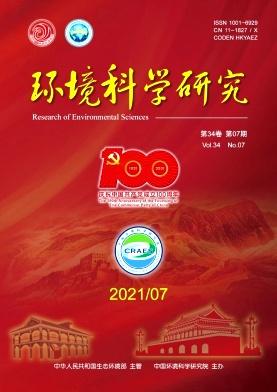Transportation Activity Patterns of Chinese Population during the COVID-19 Epidemic
Nan Jiang, Sai Li, S. Cao, Jianing Wei, Bei-bei Wang, N. Qin, X. Duan
{"title":"Transportation Activity Patterns of Chinese Population during the COVID-19 Epidemic","authors":"Nan Jiang, Sai Li, S. Cao, Jianing Wei, Bei-bei Wang, N. Qin, X. Duan","doi":"10.13198/J.ISSN.1001-6929.2020.06.16","DOIUrl":null,"url":null,"abstract":"In order to understand the travel frequency and transportation modes of the Chinese population during the COVID-19 epidemic, the travel information of 8330 residents in 31 provinces from February 25th to March 14th, 2020 was collected, and the factors influencing the travel frequency and transportation mode were analyzed According to the severity of the epidemic, 31 provinces were classified, and the difference in residents' transportation modes under different grades were analyzed and compared with those in non-epidemic periods The results show that: (1) During the COVID-19 epidemic, 75 1% of people had travel activities, among which 5 5% took several trips per day and 17 6% took fewer than one trip per week Public transportation and taxi with higher risk of infection were chosen by 6 3% and 4 0% of the population, respectively (2) The travel frequency and transportation modes of Chinese residents during the COVID-19 outbreak may be affected by demographic variables, such as gender, age, urban and rural areas, regions, local or nearby suspected/confirmed cases, and the severity of the epidemic in the provinces The travel frequency and transportation modes of people in some provinces such as Tibet Autonomous Region and Qinghai Province were less affected by the epidemic, while the travel frequency and transportation modes of residents in Hubei Province changed the most compared with the non-epidemic period (3) During the COVID-19 epidemic, the proportion of Chinese residents who chose to walk and travel by car (taxi and private car) was much higher than during the non-epidemic period, while the proportion of people who chose public transportation and bicycles or electric bicycle was lower than during the non-epidemic period This study found that the travel frequency and transportation modes of the Chinese population changed dramatically due to the COVID-19 epidemic © 2020, Editorial Board, Research of Environmental Sciences All right reserved","PeriodicalId":21108,"journal":{"name":"环境科学研究","volume":"33 1","pages":"1675-1682"},"PeriodicalIF":0.0000,"publicationDate":"2020-07-01","publicationTypes":"Journal Article","fieldsOfStudy":null,"isOpenAccess":false,"openAccessPdf":"","citationCount":"16","resultStr":null,"platform":"Semanticscholar","paperid":null,"PeriodicalName":"环境科学研究","FirstCategoryId":"1087","ListUrlMain":"https://doi.org/10.13198/J.ISSN.1001-6929.2020.06.16","RegionNum":0,"RegionCategory":null,"ArticlePicture":[],"TitleCN":null,"AbstractTextCN":null,"PMCID":null,"EPubDate":"","PubModel":"","JCR":"Q2","JCRName":"Environmental Science","Score":null,"Total":0}
引用次数: 16
Abstract
In order to understand the travel frequency and transportation modes of the Chinese population during the COVID-19 epidemic, the travel information of 8330 residents in 31 provinces from February 25th to March 14th, 2020 was collected, and the factors influencing the travel frequency and transportation mode were analyzed According to the severity of the epidemic, 31 provinces were classified, and the difference in residents' transportation modes under different grades were analyzed and compared with those in non-epidemic periods The results show that: (1) During the COVID-19 epidemic, 75 1% of people had travel activities, among which 5 5% took several trips per day and 17 6% took fewer than one trip per week Public transportation and taxi with higher risk of infection were chosen by 6 3% and 4 0% of the population, respectively (2) The travel frequency and transportation modes of Chinese residents during the COVID-19 outbreak may be affected by demographic variables, such as gender, age, urban and rural areas, regions, local or nearby suspected/confirmed cases, and the severity of the epidemic in the provinces The travel frequency and transportation modes of people in some provinces such as Tibet Autonomous Region and Qinghai Province were less affected by the epidemic, while the travel frequency and transportation modes of residents in Hubei Province changed the most compared with the non-epidemic period (3) During the COVID-19 epidemic, the proportion of Chinese residents who chose to walk and travel by car (taxi and private car) was much higher than during the non-epidemic period, while the proportion of people who chose public transportation and bicycles or electric bicycle was lower than during the non-epidemic period This study found that the travel frequency and transportation modes of the Chinese population changed dramatically due to the COVID-19 epidemic © 2020, Editorial Board, Research of Environmental Sciences All right reserved
新冠肺炎疫情期间中国人口交通活动模式研究
为了解新冠肺炎疫情期间中国人口的出行频率和出行方式,收集了2020年2月25日至3月14日31个省份8330名居民的出行信息,分析了影响出行频率和出行方式的因素。分析不同等级下居民出行方式的差异,并与非疫情期进行比较。结果表明:(1) COVID-19流行期间,75 1%的人旅行活动,其中5 5%每天几次,17 6%每周少于一次的感染风险较高的公共交通和出租车选择了6 3%和4 0%的人口,分别为(2)中国居民的出行频率和交通模式在COVID-19疫情可能会影响到人口统计变量,如性别、年龄、城乡、地区、部分省份(如西藏自治区、青海省)人员出行频率和交通方式受疫情影响较小,而湖北省居民出行频率和交通方式与非疫情期相比变化最大。中国居民选择步行和汽车(出租车和私家车)出行的比例远高于非疫情期间,而选择公共交通和自行车或电动自行车的比例低于非疫情期间。研究发现,由于COVID-19疫情,中国人口的出行频率和交通方式发生了巨大变化©2020,编辑委员会,环境科学研究版权所有
本文章由计算机程序翻译,如有差异,请以英文原文为准。


